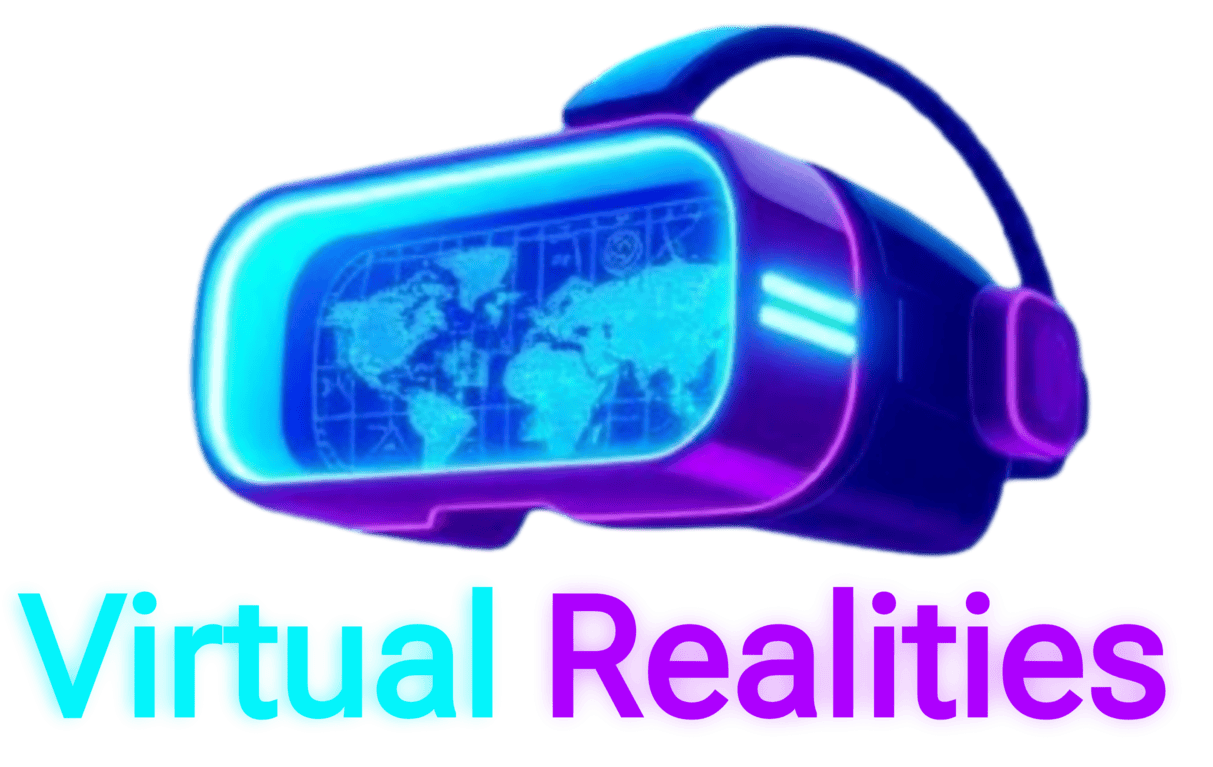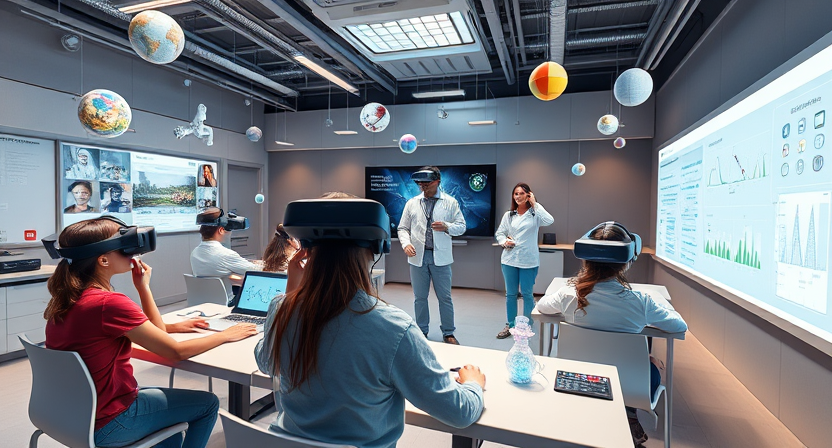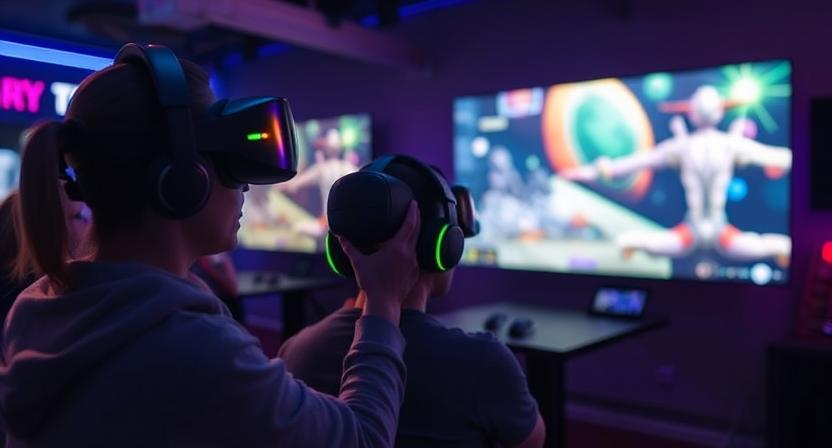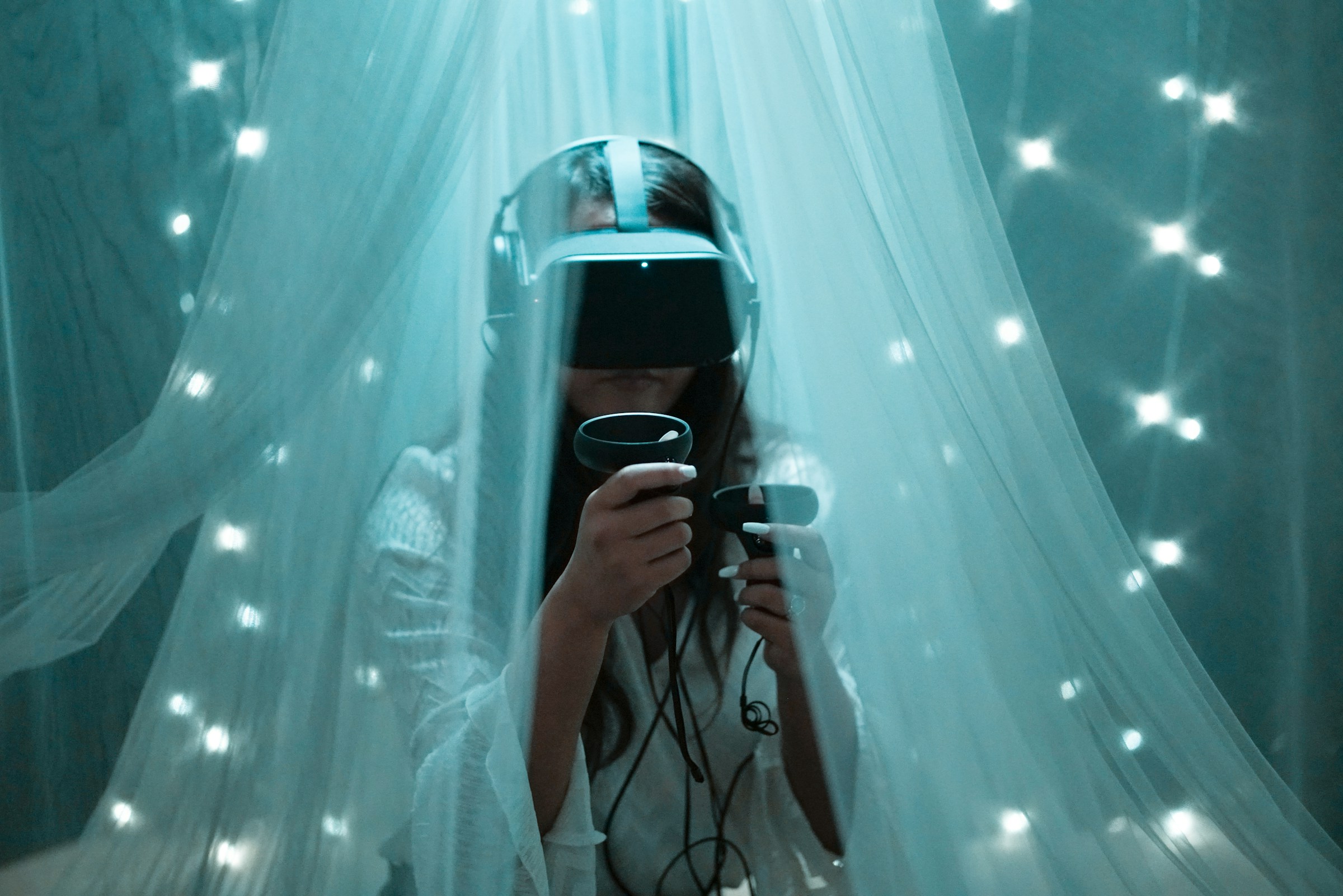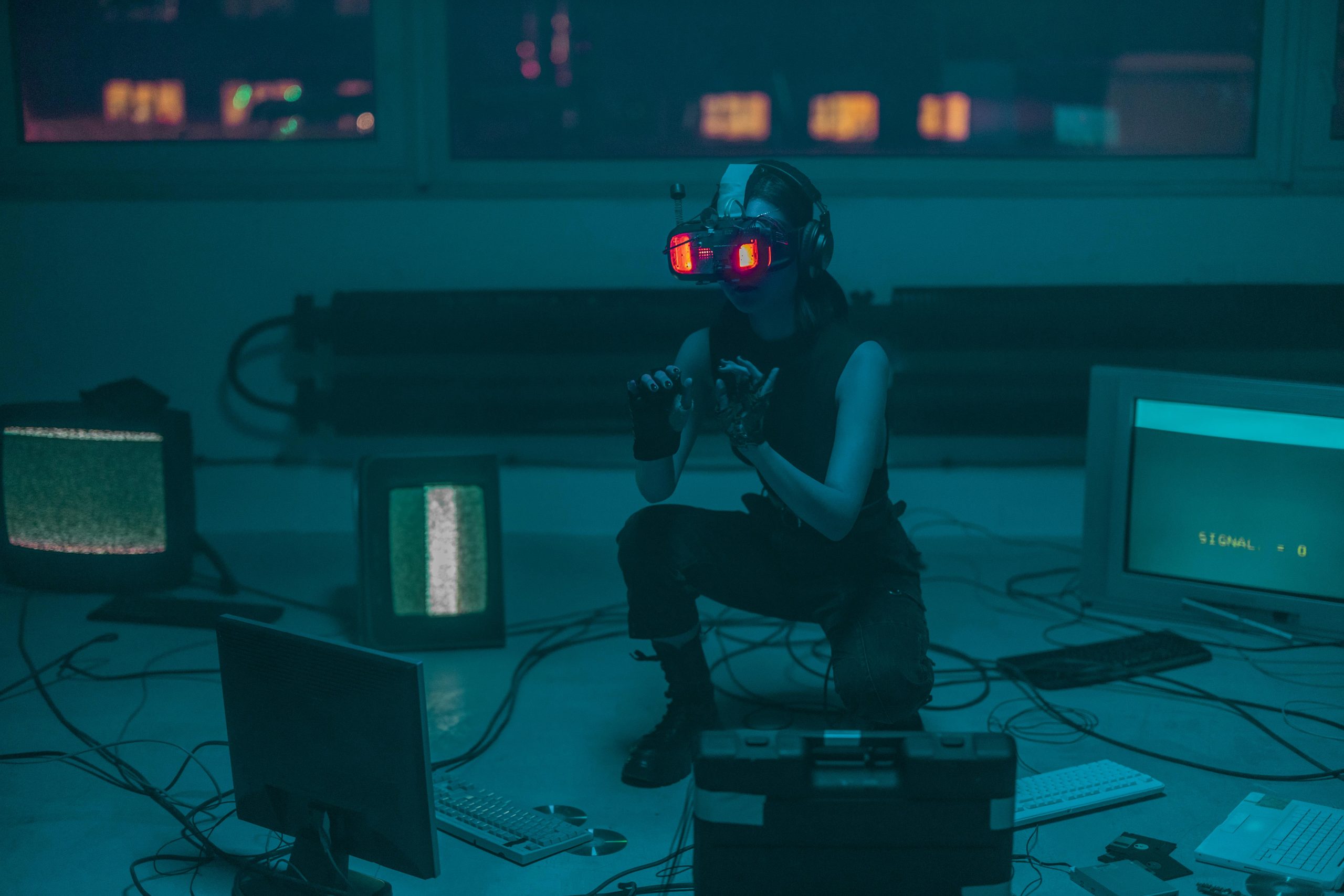The Benefits of Using Virtual Reality in Education

Virtual Reality (VR) technology has revolutionized the landscape of education by providing immersive and interactive experiences for students. By incorporating VR into learning environments, educators can cater to various learning styles and engage students in a more impactful way. This technology allows learners to explore complex concepts through simulations and hands-on experiences, making the educational content more tangible and easier to grasp.
Furthermore, utilizing VR in education helps bridge the gap between theoretical knowledge and real-world applications. Students can delve into virtual field trips, historical reenactments, or scientific experiments that may not be possible in traditional classroom settings. This hands-on approach not only enhances understanding but also fosters critical thinking, problem-solving skills, and creativity among students. The benefits of using VR in education extend beyond just academic achievements, as it also nurtures a deeper appreciation for learning and encourages curiosity and exploration.
How Virtual Reality Enhances Learning Experiences

Virtual Reality (VR) has revolutionized the way learning experiences are presented and absorbed by students. By immersing learners in simulated environments, VR technology has the power to enhance comprehension and retention levels significantly. Students are no longer constrained by traditional teaching methods but are transported into interactive worlds where they can explore, experiment, and engage with the subject matter on a deeper level.
Furthermore, the sensory-rich nature of VR heightens engagement and stimulates multiple senses simultaneously, leading to a more profound understanding of complex topics. Through VR, abstract concepts can be visualized in a tangible manner, making learning more accessible and enjoyable for learners of all ages. With its ability to cater to various learning styles, VR facilitates personalized learning experiences that cater to individual needs and preferences, ultimately leading to improved academic performance and knowledge retention.
The Impact of Virtual Classrooms on Student Engagement

Virtual classrooms have emerged as a powerful tool in boosting student engagement. The interactive nature of virtual learning environments allows students to have a more hands-on approach to their education. By immersing students in virtual simulations and scenarios, educators can create a dynamic and engaging learning experience that captivates their attention and enhances their understanding of the subject matter.
Moreover, virtual classrooms provide a platform for students to collaborate with their peers in a virtual space, fostering communication and teamwork skills. This collaborative aspect not only promotes engagement but also cultivates a sense of community and shared learning experience among students. Through group projects, discussions, and interactive activities, students are actively involved in their own learning process, leading to increased motivation and engagement in their studies.
Incorporating VR Technology into Training Programs

Virtual Reality (VR) technology has revolutionized the realm of training programs by offering immersive and interactive learning experiences. Incorporating VR into training can provide learners with realistic simulations that simulate real-life scenarios, creating a dynamic and engaging environment. By allowing users to actively participate in simulations, VR enables trainees to practice decision-making skills, problem-solving, and critical thinking in a safe and controlled setting.
Furthermore, VR technology in training programs can cater to a wide range of industries, from healthcare to aviation, by offering hands-on experiences in a virtual environment. This approach not only enhances the retention of information but also bridges the gap between theoretical knowledge and practical application. The ability to repeat scenarios and receive immediate feedback in a virtual setting can significantly boost the learning curve and skill development of individuals undergoing training programs.
The Role of Immersive Simulations in Education

Immersive simulations have become a valuable tool in modern education, offering students a dynamic and interactive way to engage with complex concepts. By creating virtual environments that students can actively participate in, educators can enhance learning experiences and cater to diverse learning styles. These simulations provide a hands-on approach that can bridge the gap between theory and practice, allowing students to apply their knowledge in realistic scenarios.
Furthermore, immersive simulations offer a safe space for students to make mistakes and learn from them without real-world consequences. This trial-and-error methodology promotes critical thinking and problem-solving skills, as students are encouraged to experiment and explore various solutions within the simulated environment. The interactive nature of these simulations fosters a deeper understanding of the subject matter and encourages active learning, making education more engaging and effective.
Virtual Field Trips: Bringing Learning to Life

Virtual field trips are revolutionizing the way students experience learning by transporting them to locations they may not have the opportunity to visit otherwise. Through virtual reality technology, students can explore historical landmarks, scientific phenomena, and cultural sites from the comfort of their classroom. This immersive experience allows for a deeper understanding of the subject matter as students can interact with their surroundings and engage in hands-on learning activities, making the content more tangible and memorable. By bringing learning to life in this way, virtual field trips spark curiosity and foster a sense of wonder that traditional methods may not always inspire.
In addition to providing a more engaging learning experience, virtual field trips also promote inclusivity by removing barriers to access. Students from diverse backgrounds, regardless of their geographical location or financial means, can participate in these virtual excursions and benefit from the wealth of knowledge and experiences they offer. This accessibility not only levels the playing field in terms of educational opportunities but also encourages collaboration and empathy among students as they explore new environments and cultures together. Overall, virtual field trips hold the potential to transform education by making learning more dynamic, interactive, and inclusive for students of all ages.
The Use of 3D Models in Virtual Learning Environments

When it comes to virtual learning environments, the integration of 3D models can revolutionize the way students engage with educational content. These dynamic representations enable learners to interact with complex concepts, such as scientific structures or historical artifacts, in a hands-on and immersive manner. By manipulating and exploring 3D models, students can gain a deeper understanding of subjects that may have previously seemed abstract or distant.
Additionally, the use of 3D models in virtual learning environments can cater to different learning styles and preferences. Visual and tactile learners, in particular, can benefit greatly from the interactive nature of these models, allowing them to visualize intricate details and spatial relationships in a way that traditional 2D images or text cannot provide. This multi-sensory approach to education enhances retention and comprehension, making the learning process more engaging and effective for a diverse range of students.
Creating Interactive Virtual Lessons with VR Technology

Creating interactive virtual lessons with VR technology allows educators to foster a more engaging and immersive learning environment for students. By incorporating virtual reality experiences into their lessons, teachers can cater to different learning styles and provide hands-on learning opportunities that enhance comprehension and retention of information. Through interactive simulations and 3D models, students can manipulate virtual objects, explore complex concepts, and actively participate in their learning journey.
Moreover, virtual reality technology enables students to transcend the traditional boundaries of a classroom and embark on virtual field trips to historical sites, natural wonders, and even outer space. These virtual excursions not only bring learning to life but also cultivate a sense of curiosity and wonder among students. By leveraging VR technology, educators can elevate the educational experience, making learning more dynamic, interactive, and enjoyable for learners of all ages.
Utilizing Virtual Reality for Hands-On Learning

Virtual reality (VR) provides a unique opportunity for students to engage in hands-on learning experiences that were previously limited by physical constraints. By immersing students in interactive simulations and scenarios, VR technology allows them to manipulate objects, conduct experiments, and practice skills in a safe and controlled environment. This hands-on approach not only enhances learning retention but also fosters a deeper understanding of complex concepts through experiential learning.
Furthermore, the use of VR for hands-on learning can cater to different learning styles and preferences, making educational content more accessible and engaging for a diverse range of students. Whether it’s exploring the human body in 3D, conducting virtual science experiments, or practicing real-world skills in a simulated environment, VR brings a new dimension to hands-on learning that traditional classroom settings may not be able to replicate. As educators continue to leverage the power of VR technology, the potential for transforming educational experiences and equipping students with practical skills for the future remains promising.
The Future of Education: Virtual Reality Trends

Virtual reality (VR) technology is rapidly evolving and is poised to revolutionize the future of education. As we look ahead, one of the key trends in education is the increasing integration of VR into learning environments. Schools and institutions are recognizing the potential of VR to engage students in immersive experiences that enhance their understanding of complex subjects.
Moreover, the demand for virtual reality tools in education is expected to grow significantly in the coming years. Educators are exploring innovative ways to leverage VR technology to create dynamic and interactive lessons that cater to diverse learning styles. As VR becomes more accessible and affordable, we can anticipate a shift towards a more personalized and engaging educational experience for students across various disciplines.
Enhancing Collaboration in Virtual Classrooms

Collaboration in virtual classrooms plays a pivotal role in enriching the learning experience for students. Through the use of virtual reality technology, students can engage in group projects, discussions, and activities in a simulated environment that mirrors real-life interactions. This fosters teamwork, communication, and problem-solving skills among students, preparing them for collaborative work settings in the future.
Additionally, virtual classrooms provide an inclusive space where students from diverse backgrounds can come together to learn and share ideas. By incorporating VR tools that allow for seamless communication and interaction, educators can create a sense of community within the virtual classroom, encouraging students to actively participate and engage with their peers. This collaborative approach not only enhances the academic experience but also cultivates a supportive learning environment where students feel empowered to share their perspectives and contribute to the collective learning experience.
Virtual Reality Tools for Special Education

In the realm of special education, virtual reality tools are revolutionizing the way students with diverse learning needs engage with educational content. These innovative technologies offer a multi-sensory experience that caters to various learning styles, making complex concepts more accessible and comprehensible. By immersing students in interactive virtual environments, educators can create personalized learning experiences that cater to individual strengths and challenges.
Furthermore, virtual reality tools for special education have shown promising results in enhancing sensory integration, spatial awareness, and social interaction skills among students with disabilities. Through simulated scenarios and hands-on activities, learners are able to practice real-life skills in a safe and supportive virtual environment. This not only boosts their confidence and motivation but also provides opportunities for repeated practice and reinforcement of key concepts.
Addressing Accessibility in Virtual Learning Spaces

Accessibility in virtual learning spaces is a critical aspect that must be carefully considered to ensure that all students can fully participate in educational activities. One key consideration is providing multiple options for representation, such as incorporating text-to-speech capabilities for students with visual impairments or offering subtitles for students who are deaf or hard of hearing. By offering these features, virtual learning environments can cater to the diverse needs of students and create a more inclusive learning experience for all.
Another important aspect of addressing accessibility in virtual learning spaces is ensuring that the technology used is compatible with assistive devices commonly used by students with disabilities. This may involve testing the compatibility of virtual reality headsets, controllers, or other tools with screen readers, alternative input devices, or other assistive technologies. By proactively addressing these compatibility issues, educators can ensure that students with disabilities can fully engage with virtual learning materials and activities without unnecessary barriers.
The Role of VR in Skill Development

Skill development is a crucial aspect of education and professional growth. Virtual Reality (VR) technology has emerged as a powerful tool in enhancing skill development across various disciplines. By providing immersive and interactive experiences, VR enables users to practice and refine their skills in a realistic virtual environment. This hands-on approach fosters experiential learning and allows individuals to learn by doing, which can lead to more effective skill acquisition and retention.
Moreover, VR offers a safe and controlled setting for individuals to engage in high-risk or complex scenarios that may be challenging to simulate in the real world. This technology can be particularly valuable in fields such as healthcare, aviation, and emergency response training, where hands-on practice is essential but comes with potential risks. Through VR simulations, learners can repetitively practice tasks, receive immediate feedback, and gradually build proficiency in a way that traditional methods may not fully replicate.
Exploring Different Teaching Methods with Virtual Reality

Virtual reality (VR) technology offers a new realm of possibilities for educators to explore different teaching methods. By immersing students in a virtual environment, teachers can create interactive and engaging lessons that cater to diverse learning styles. Whether it’s a history lesson that transports students to a specific time period or a science experiment that simulates real-life scenarios, VR allows for hands-on learning experiences that traditional teaching methods may not be able to provide.
Furthermore, VR can be used to incorporate gamification elements into lessons, making learning more enjoyable and effective. Through interactive challenges and simulations, students can actively participate in their own learning process, leading to a deeper understanding of the subject matter. By leveraging the unique capabilities of VR technology, educators have the opportunity to revolutionize teaching methods and enhance student engagement in ways that were previously unimaginable.
Measuring the Effectiveness of VR in Education

Utilizing virtual reality (VR) in educational settings has generated considerable interest in recent years, with educators looking to maximize the benefits of this innovative technology to enhance learning outcomes. To measure the effectiveness of VR in education, various approaches can be employed. One method involves conducting pre- and post-assessments to gauge students’ knowledge acquisition and retention following VR-enhanced lessons. By comparing these results, educators can evaluate the impact of VR on students’ comprehension and learning progress.
Additionally, surveys and feedback from both students and instructors play a crucial role in determining the effectiveness of VR in education. Gathering insights from participants about their experiences with VR technology can provide valuable information on aspects such as engagement levels, motivation, and overall satisfaction. These qualitative data points offer a more nuanced understanding of how VR is perceived and utilized in educational contexts, helping educators make informed decisions about integrating VR into their teaching practices.
Virtual Reality for Professional Development

Professional development is a crucial aspect of staying current and relevant in today’s fast-evolving world. Virtual reality offers a unique opportunity to enhance professional development by providing immersive and engaging learning experiences. Through VR technology, individuals can participate in lifelike simulations that allow them to practice and refine their skills in a realistic virtual environment. This hands-on approach to learning can be particularly effective in fields where practical experience is essential, such as medical training, technical skills development, and emergency response scenarios.
Moreover, virtual reality for professional development can offer cost-effective training solutions for organizations looking to upskill their workforce. By utilizing VR tools, companies can provide training across various locations without the need for physical facilities or travel expenses. This flexibility not only saves time and resources but also allows employees to engage in training at their own pace and convenience. Additionally, the interactive nature of virtual reality simulations can boost learner engagement and retention, leading to more effective skill acquisition and application in real-world settings.
Challenges and Solutions in Implementing VR in Education

One common challenge in implementing virtual reality in education is the cost associated with acquiring the necessary hardware and software. Schools and institutions may struggle to budget for VR technology, especially in the face of other pressing financial needs. Additionally, there may be ongoing maintenance and upgrade costs to consider, further complicating the financial aspect of incorporating VR into educational settings.
Another obstacle to the widespread adoption of virtual reality in education is the lack of training and support for educators. Many teachers may not be familiar with VR technology or how to effectively integrate it into their teaching practices. Without proper training and resources, educators may feel overwhelmed or ill-equipped to utilize VR to its full potential, hindering its successful implementation in the classroom.
The Role of Educators in Utilizing VR Technology

Educators play a pivotal role in incorporating virtual reality (VR) technology into educational settings. By embracing VR tools, teachers can create immersive learning experiences that cater to diverse learning styles and enhance student engagement. Educators need to stay informed about the latest VR trends and developments to effectively integrate this technology into their teaching practices.
Moreover, educators should undergo training to master VR tools and understand how to leverage them to cater to the specific needs of their students. By effectively utilizing VR technology, educators can provide hands-on learning experiences, facilitate skill development, and foster collaboration among students. Ultimately, educators hold the key to unlocking the full potential of VR in education and shaping the future of learning.
Best Practices for Integrating VR into Educational Curricula

Virtual Reality (VR) technology continues to revolutionize the way educators deliver content and engage students in the learning process. When integrating VR into educational curricula, it is essential to start by clearly defining the learning objectives and outcomes that can be enhanced through immersive experiences. By aligning VR activities with specific educational goals, educators can ensure that students are not only captivated by the technology but also actively learning and retaining information in a meaningful way.
In addition to setting clear learning objectives, educators should consider the accessibility of VR technology for all students. Providing training and support for both teachers and students is crucial in ensuring that VR experiences are inclusive and beneficial for learners of all abilities. Furthermore, incorporating VR into collaborative learning experiences can promote teamwork and communication skills, preparing students for success in the increasingly digital and interconnected world they will eventually enter.
